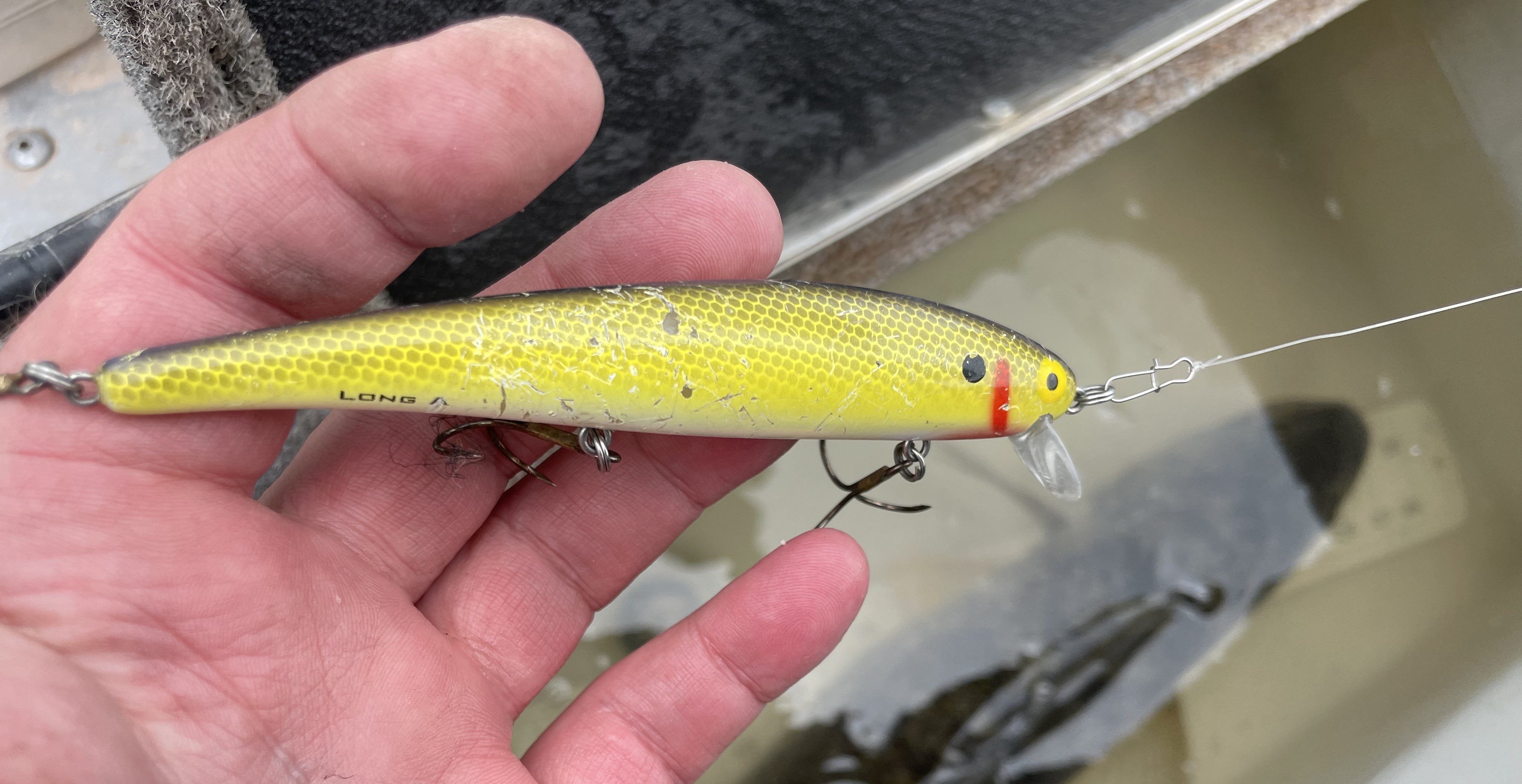- Nov 13, 2023
Critical Considerations for Reservoir Walleye Fishing Success
Variances in water levels and flow have a huge impact on walleye locations and behavior. Understanding these variables and strategizing accordingly can help you catch far more fish.
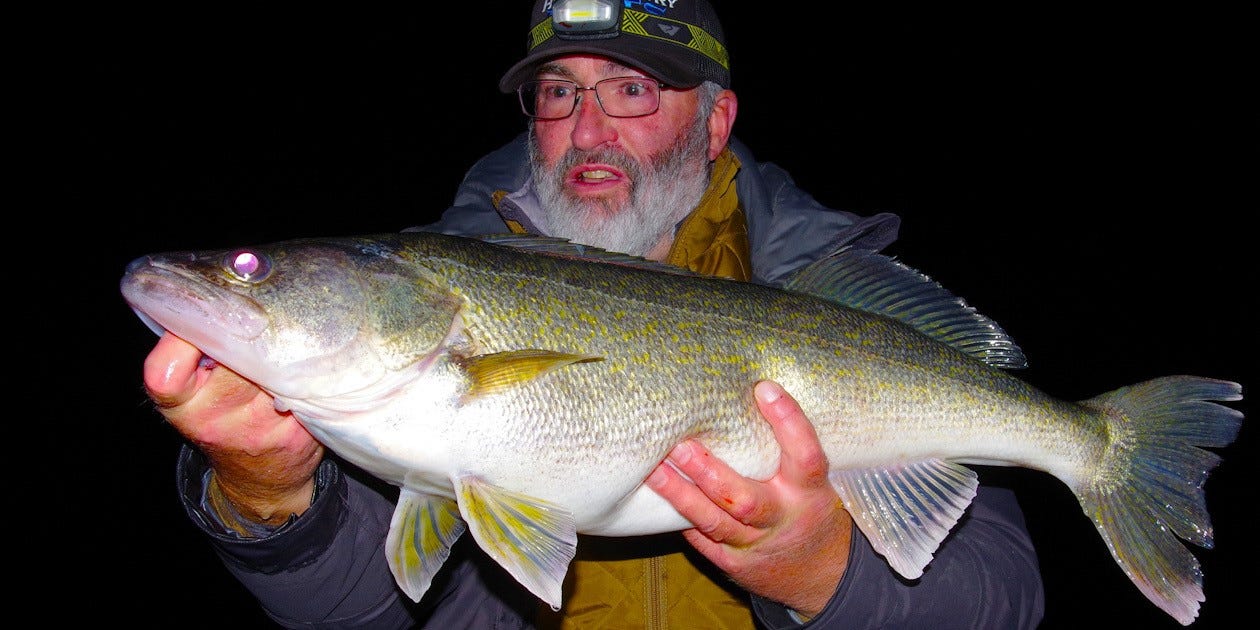

Nomads. Roamers. Travelers. Reservoir walleyes have an earned reputation for wanderlust. Somewhere must be better than here! Even when they have ample forage, they still seem to keep moving to find even better prospects. Every day is a new day when you fish for walleyes in reservoirs!
Variability in water level and flow makes reservoir environments difficult to pattern as the fish modify locations to adapt to changing water conditions. Scott Golden, founder of the groundbreaking website, Walleye Central, has been known to say, “I always fish the point with the herd of cattle on it. But last year the lake was so high all the cattle were underwater so I couldn’t see which point to fish.” Silliness aside, developing a plan to follow walleye movements as the waters flood or drain is key for consistent reservoir success.
Reservoir water levels vary for many reasons, including irrigation drawdowns, seasonal runoff, power generation, flood control and downstream barge traffic on big systems like Missouri and Mississippi rivers or the Columbia River out West. With so many variables, how are anglers to get a handle on it? Some basic formulas apply.
Drawdowns Draw Walleyes Down
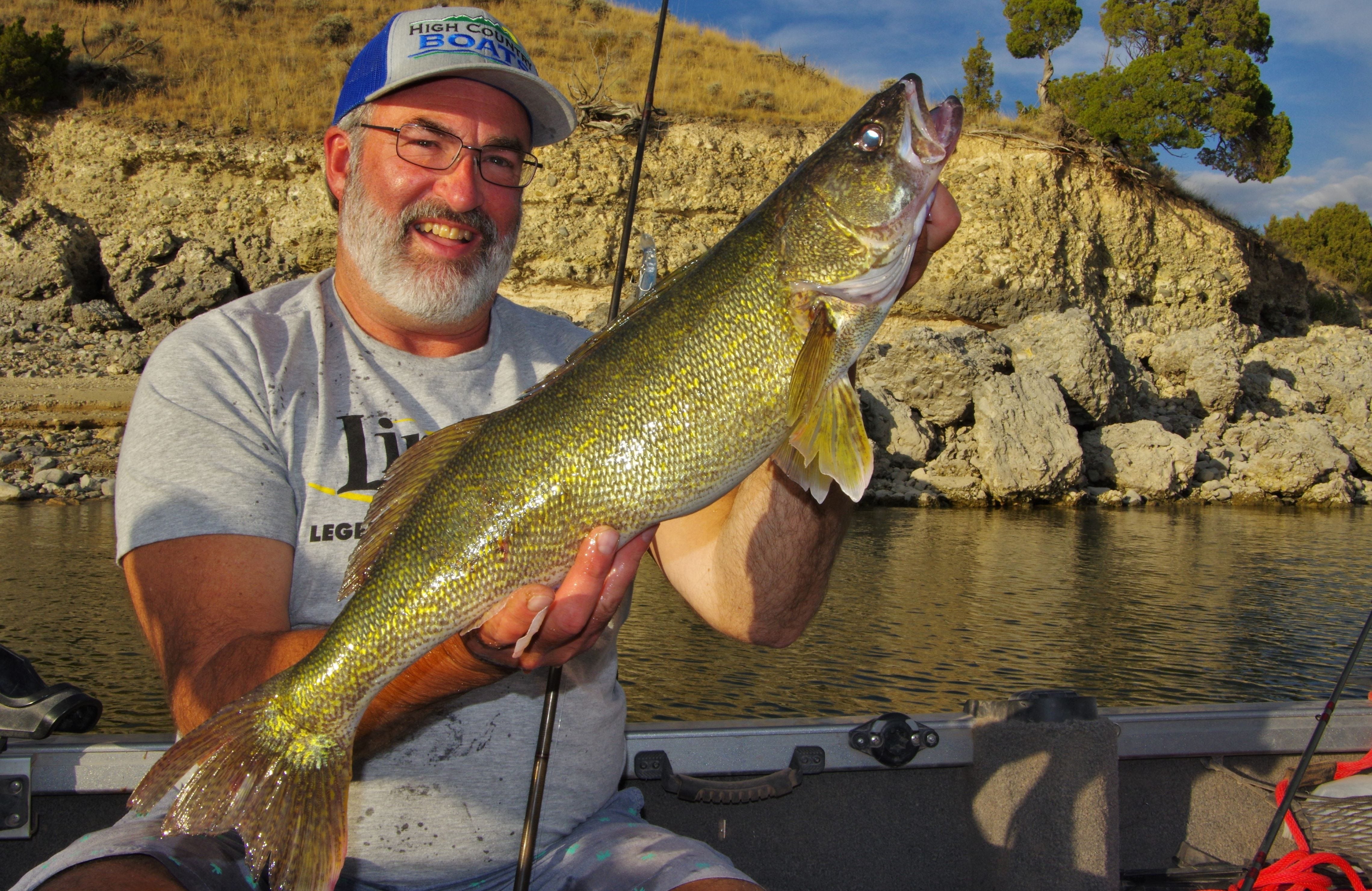

This applies in two ways. First, instincts tell walleyes and other fish that dropping water levels could leave them grounded in a slough or a shoreline puddle. So, they head for deeper water. Recognize that each water body has its own degree of “deeper.” That could be two feet deeper in a small water or back bay or it could be 30 feet deeper in a big canyon reservoir or a sprawling prairie impoundment.
The second meaning to “Drawdowns Draw Walleyes Down” is to draw them down the lake. After the spring spawn, reservoir walleyes tend to drop down from spawning gravels up a lake and feeder rivers. If this coincides with a sharp drop in water level from irrigation or drought, you may find a large portion of the population dropping into the lower reaches of the reservoir, even hanging out within view of the dam on reservoirs that are 50 or even 100 miles long.
Conversely, rising water levels tend to lure walleyes into the shallows. Flooding vegetation, waterlogged willows and waist-deep water in bottomlands all signal anglers to get shallow!
Years ago, in an early summer walleye tourney my teammate and I found walleyes in a multi-acre flooded hayfield and cashed a nice second place check out of nearly 200 teams. By keeping our game less than 8 feet deep and in freshly flooded grass, we were able to net a great bag.
Current Concentrates Walleyes
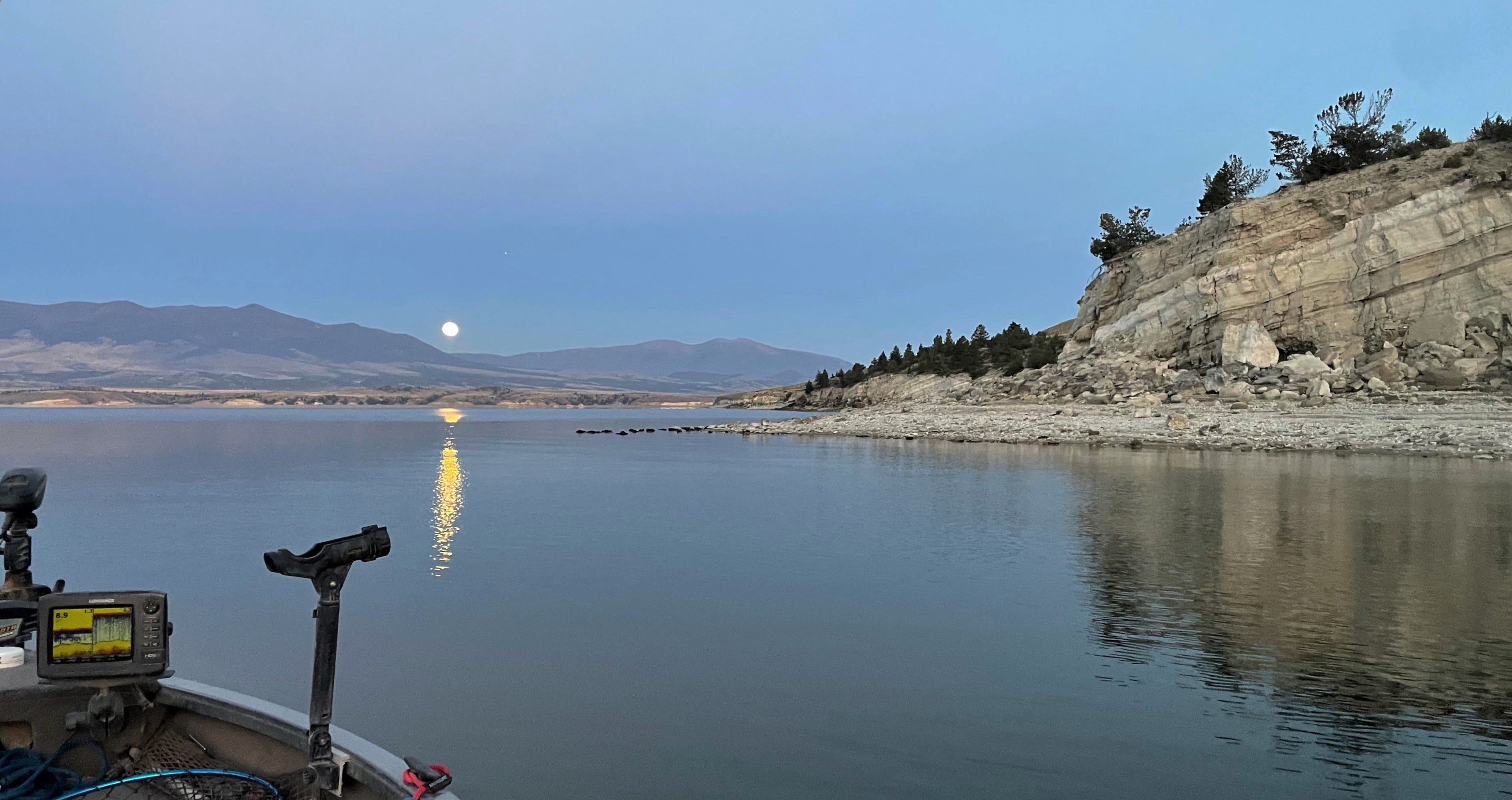

As important as water levels are, the amount current is also of tremendous importance for finding the bulk of the population in a reservoir. And this is where reservoirs get weird!
Depending on the river inflow AND outflow through the dam the current in a reservoir may not match the weather or season. For example, even during strong runoff or high inflow from upriver impoundments, if the dam is holding water and releasing less water out than what’s flowing in you won’t notice much current. Conversely, sometimes in excessively dry conditions the dams need to release more water for downstream barge traffic, which creates higher flow and noticeably more current in the system, at a time when you might expect less flow.
One of my local Missouri River reservoirs is managed by the U.S. Army Corps of Engineers. Every fall the Corps drops the lake level 15-20 feet to prepare for mountain runoff coming the following spring. However, sometimes downstream issues with too much water or flooding on the Gulf Coast require my local dam to delay the usual release. A few years ago, the lake actually came up a few inches in October during the usual draining season. The walleye went berserk! I caught my personal best 16.22-pounder, and so many other trophy walleyes you wouldn’t believe me if I told you the numbers.
This October my local reservoir again came up a few inches for the first time in five years. I rigged up my Bomber 15As and Cotton Cordell Ripplin’ Red Fins and once again hit the shallows for tremendous fishing, including a 13.25-pound fatty, before single-digit temps knocked me off the water.
In general, when the lake level comes up, the current is reduced, and fish tend to move shallower. On many lakes that can be a good thing. It may sound preposterous, but when they have too much water in New Orleans, I get better walleye fishing in Montana! Like I said, reservoirs are weird.
Read the Currents
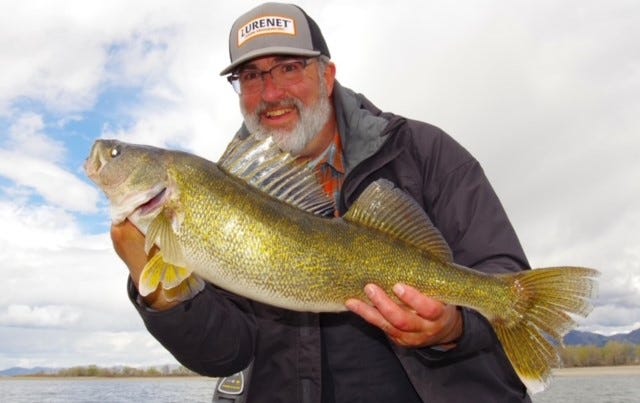

Just because my October low-current bite happened doesn’t mean less current is somehow better than more current. You must take current conditions into account as you search for fish. Normally, I seek current-swept main lake points and narrows because that current tends to concentrate walleyes and forage. I usually try to find areas with more current rather than less.
Be aware that series of points and points interspersed with small bays can create interesting currents. For example, we all know that when the dam is dumping lots of water, the whole reservoir picks up current. What not everyone knows is that on big impoundments that can create massive eddies that could be a couple miles long as the current swirls downstream of a major point.
This year I’ve been catching some dandy walleyes in a type of current I have only recently begun to study—upwelling. Here’s how the upwellings I’ve found work. During periods with significant current, some main-lake points serve to bend the current around the point and into a downstream bay. The current basically shears past the tip of the point and meanders into the bay after it flows around the point. That current then crosses the bay and runs into shore on the opposite side of the bay. That current then must disperse, with some of it going farther into the bay and petering out. Some current runs out of the bay. But, if that bay-crossing current hits a steep shoreline it UPWELLS and brings water of lower temperature from the depths.
I had found strange temperature differences in the past without understanding why there would be a stretch of water 3-5 degrees colder than everywhere else along that shore. And it didn’t make sense to catch so many big fish in colder water—walleyes and forage typically move to the warmer zones. It was while nightfishing on a calm night that I noticed my Bomber 15A trolling passes required a couple clicks of extra “juice” from my electric troller to maintain speed. With no wind, the only reason to adjust my trolling motor settings either up or down is CURRENT. By the time any of us find the current, the walleyes have already moved in.
Keep Reservoir Records
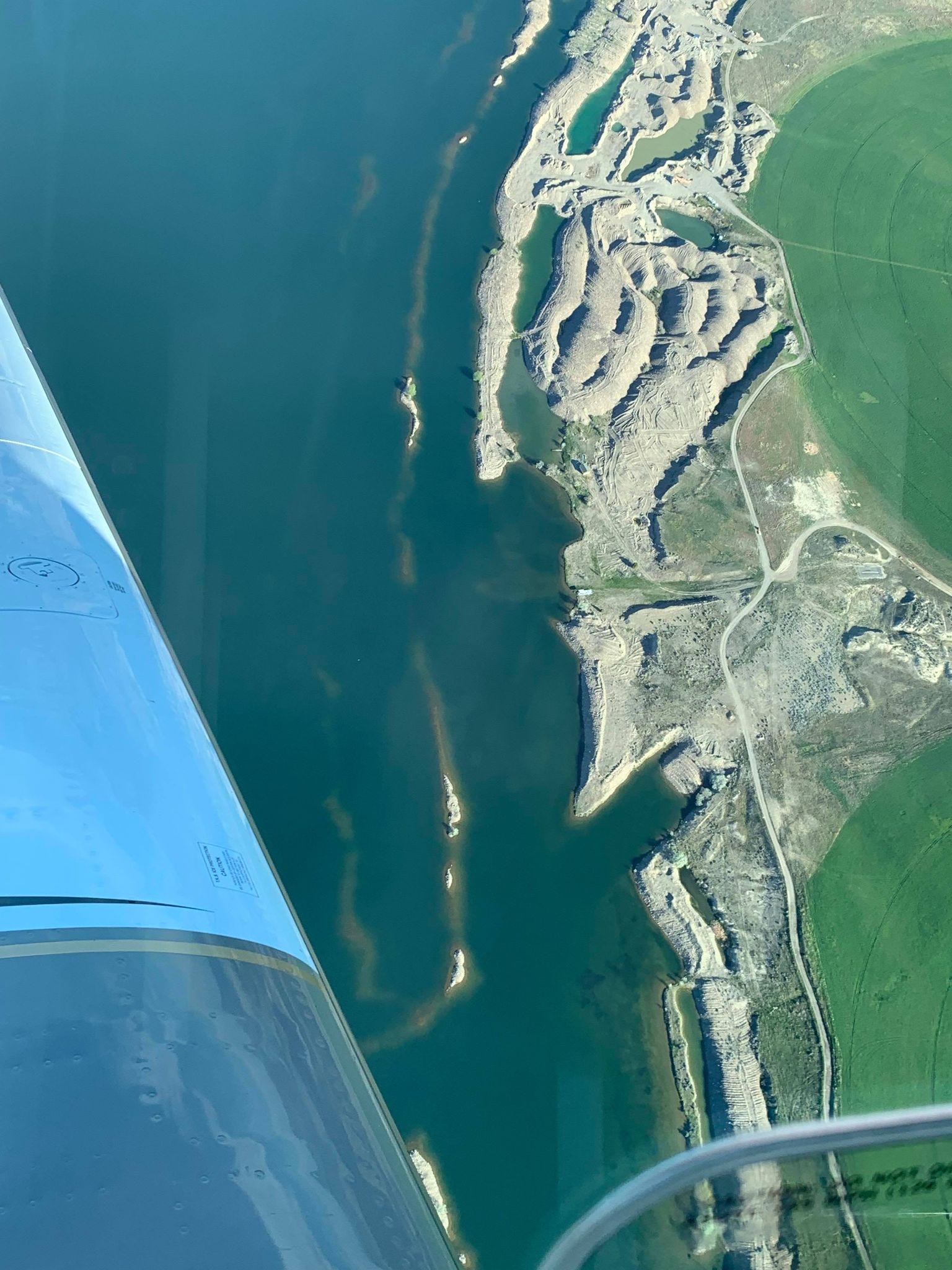

Just as my own closest reservoirs have their seasonal water level and current fluctuations, so do yours. It’s not difficult to pay attention and see what’s happening locally, but you must be disciplined enough to figure it out and apply it in subsequent years. Most of the time, records help you track norms on a reservoir and how you’ve dialed in the bite during those normal conditions. Even small reminders are worth the effort:
- Water rising – hit the backs of bays or upper reservoir zones and fish flooded vegetation
- Water dropping – fish deep off main lake points or on deep shelves down near the dam
- High current season – find the strongest current at narrows and major points
- Low current times – check coves, secondary points and large flats
Every reservoir will have a list of norms that resemble these examples. As you dial in the bite, tie your experience to the lake conditions so you can repeat it in the future.
Note Anomalies – Those big teeners I’ve caught during October when the water level comes up a few inches are way outside the norms. Those abnormal situations are well worth dialing in! While walleyes’ nomadic tendencies may seem random, they are not! They throw us for loops with their nearly constant travel, but there’s no doubt that their travels and feeding habits are tied to water level and current. It’s on us to take note!
Study Shorelines – One of the best things about low water levels is you get to visually examine the shoreline. I have a colleague who videotaped MILES of reservoir shoreline during a historic low water period. And though he seldom actually views that footage, the fact that he made the footage gives him better knowledge of that lake than most anglers will ever possess. Watch for things like boulder piles, reefs, sand banks and stair-step shores coinciding with old water levels.
South Dakota Walleye Record Broken Twice This Fall
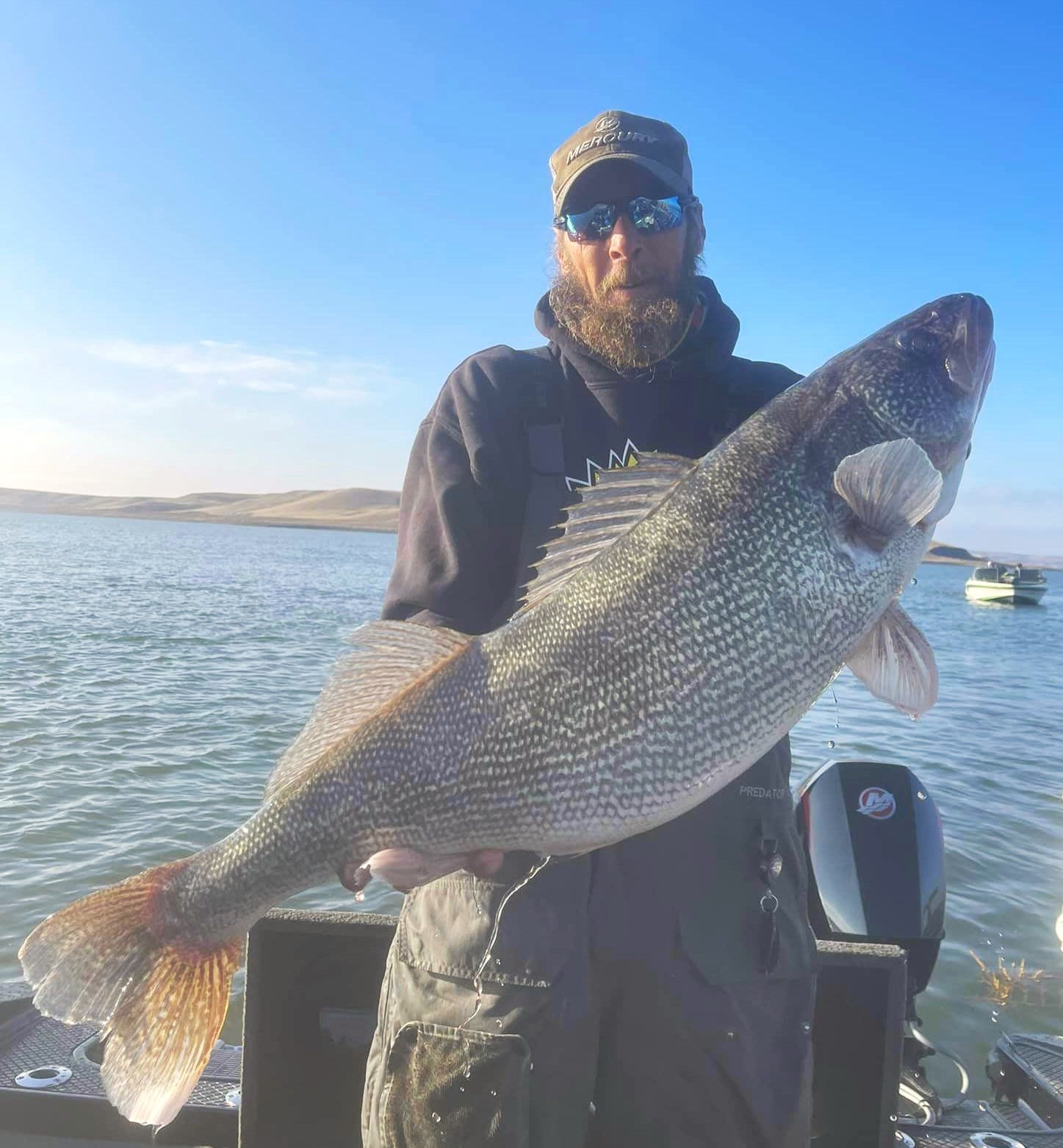

Oahe Reservoir on the Missouri River is up nearly 10 feet over the level it was last year, and big walleyes have responded! South Dakota resident, Keith Pazour holds his pending new record 17 pound, 13.92 ounce walleye. The catch was on November 11. Keith notes that, "Keeping record of water level is huge."
Presentations for Reservoir Situations
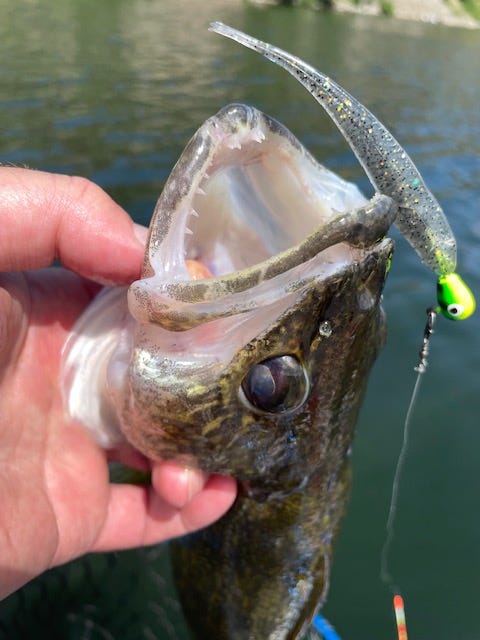

When dialing in the bite while water levels and flow are in flux, I don’t recommend getting too experimental with presentations. You have enough variables to account for in the water level and flow. No sense adding a list of tactical variables. Go with standard presentations whenever possible.
For covering big flat, it’s hard to argue with the history of the Lindy Rig and live bait, at least while playing the finesse bite and slow dragging’ through deeper fish marks. When things get a little more “Wild West,” up the aggression with crawler harness/spinner combos like the Lindy Colorado and Indiana Blade Spinner Rigs. That flooded hayfield I mentioned earlier was a spinner rig bonanza!
Shoreline Structures & Rock Piles are custom-made for casting. Though I’m a hardbait lover, I typically cast plastics to the shoreline. YUM Pulse swimbaits, both 3.5- and 4.5-inch sizes, have that slender profile that walleyes love plus a slightly oversized paddle tail for strong thump. Walleyes on the feed annihilate this lure.
If the Pulse is too aggressive, tone it down with the best subtle bait in the business, the YUM FF Sonar, a detailed fork-tailed jig dressing or drop-shot bait that has scent/flavor the walleyes love. The contoured head and body scales give this bait an enhanced sense of feel for walleyes’ lateral lines. Lots more noticeable than a smooth plastic of similar shape. And the Yum FF Sonar is available in several translucent or semi-translucent colors for clear water and opaque shades as well. Using my forward-facing sonar with the FF Sonar plastics to fish upwellings in my local reservoir was a highly successful learning experience this past year. I can’t wait for more!
Shoreline Stretches really beg for crankbaits or, for shallow fish on the bite, stickbaits may be a better call. Note that for me “stickbaits” are just shallow-running jerkbaits fished at a mostly steady pace or with a sweep and drop approach.
My biggest walleyes the past 5 years have come primarily on the Bomber Long A 15A fished inside of 8 feet. This type of stretch fishing drives the diehard casters batty due to the non-specific placement. It’s the opposite of the forward facing sonar game and is not directed at any singular fish mark or group of marks. I actually look for a “Miracle Mile” or perhaps even longer to make these trolling passes—usually at slow speeds with the bow troller.
Whether fishing shallow with a stickbait or deeper with a crankbait, most of us use more long, thin lures than shorter thicker lures. All the Bomber Long As, and particularly the Bomber 15A for the shallows, 24A mid-depth and 25A for deep spots, have a long and storied history of catching big walleye. The Bandit Walleye Shallow, Suspending Minnow, Walleye Deep and Generator just may be the most popular long, thin walleye baits in the industry right now. Also, the extensive line-up of Smithwick Rogues designed for a variety of depths also needs to be in your boat. And don’t tell anybody, because it’s a sleeper, but many of us use and seldom discuss the Cotton Cordell Ripplin’ Red Fin in both standard and suspending models. This bait has a wide aggressive wobble that has produced a bunch of fine ‘eyes for me in recent years.
Current-Swept Points, Narrows, Causeways – This is a traditional situation for casting hardbaits—stickbaits for the shallows, crankbaits for deeper zones. Though you get added action reeling against the current, I seem to catch more big fish working with the current, so my lure moves toward walleyes facing into the current.
I’ve been casting Bomber 7As, Deep Flat As and Cordell Wally Divers forever, but if you want a bit more “dig” you’ll like the Bomber Fat Free Shad and Bandit 300 for that same situation. These are all shorter baits, but they cast like bullets and have a “come-and-get-it” rattling cadence that pays big dividends. I’m not a big color guy by modern standards but I’m quite sold on the walleye-looking eyespots on several of the Next Generation Bombers in the Green Pearl Shad color.
